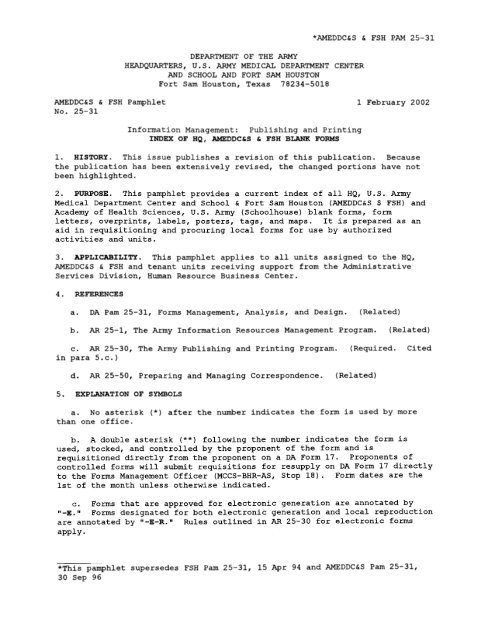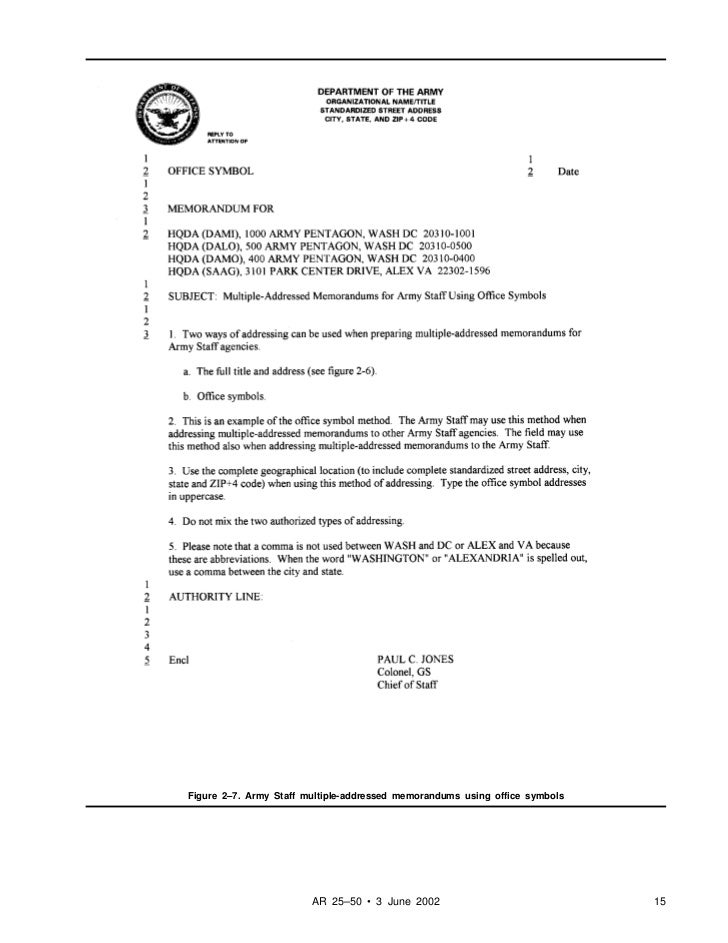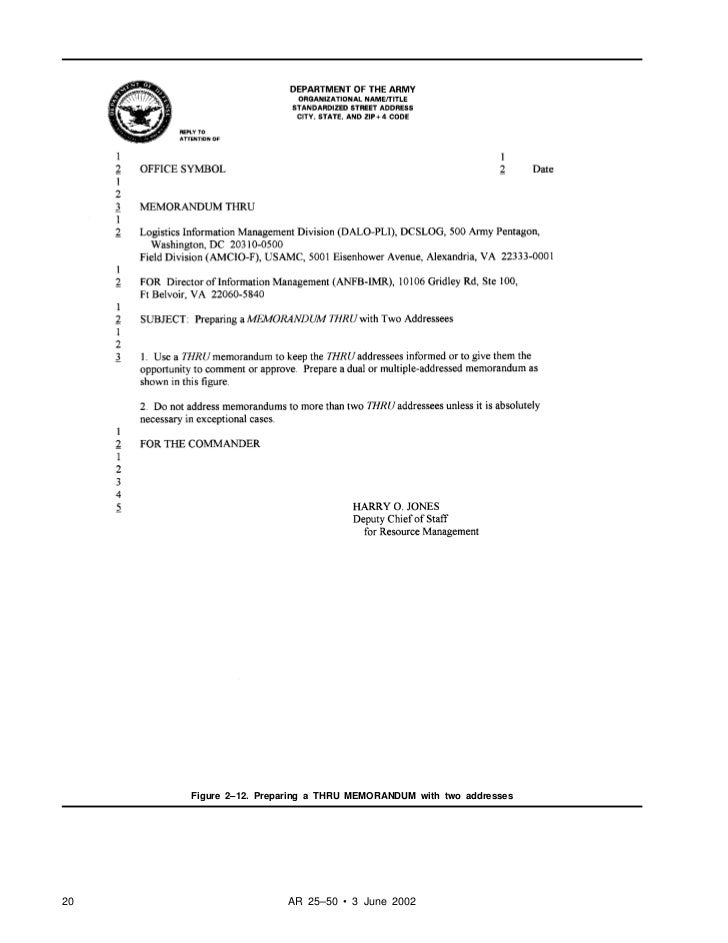Army Memorandum Regulation 25 50
Army Memorandum Regulation 25-50: The Ultimate Guide to Effective Army Writing At the core of the United States Army's communication practices lies the Army Memorandum Regulation 25-50, a comprehensive guide that outlines the standards and principles for effective writing within the military. In this article, we will delve into the key aspects of this regulation, providing you with invaluable insights into how to enhance your writing skills for success in your Army career. 1. Understanding the Importance of Army Writing Standards Writing effectively within the Army is not just a matter of professionalism; it is crucial for ensuring clear communication, maintaining organizational efficiency, and facilitating decision-making processes. The Army Memorandum Regulation 25-50 establishes the foundation for achieving these goals through its carefully curated set of standards. One of the key elements emphasized in the regulation is the use of clear and concise language. By adhering to this principle, Army personnel can minimize ambiguity and ensure that their messages are understood accurately. This can be achieved by avoiding unnecessary jargon or acronyms and opting for simple, straightforward language instead. 2. Harnessing the Power of Structure and Formatting To improve the readability and impact of Army writing, the regulation also provides guidance on structuring and formatting documents. When creating an Army memorandum, it is important to follow the prescribed format, which includes aspects such as the heading, subject line, and identification of the writer. Within the content of the memorandum, employing headings and subheadings can further enhance clarity and organization. By using h2 tags for each image, readers can easily navigate through the document, and the alt tags accompanying the images provide accessibility for visually impaired individuals. Incorporating relevant images that supplement the written content can also increase engagement and understanding. 3. Writing Engaging Content: Strategies for Success While the Army Memorandum Regulation 25-50 primarily focuses on the technical aspects of writing, it is important to remember that engaging content has the power to captivate readers and convey messages more effectively. Although the regulation does not specifically address this aspect, adopting strategies to create compelling content can greatly enhance the impact of your Army writing. a. Tell Stories: Narratives can be a powerful tool for delivering messages in a relatable and memorable way. By incorporating relevant anecdotes, you can humanize your writing and connect with your audience on a deeper level. b. Use Active Voice: Active voice adds vigor and clarity to your writing, making it more direct and engaging. Rather than using passive constructions, strive to highlight the subject and the action they are undertaking. c. Incorporate Examples and Case Studies: Concrete examples and case studies can help illustrate complex concepts and make them more accessible to readers. By providing real-world scenarios, you can relate your content to the experiences and challenges faced by Army personnel. 4. Frequently Asked Questions (FAQ) Section To address common queries that may arise regarding Army writing and the Army Memorandum Regulation 25-50, we have compiled a list of frequently asked questions. Read on to find answers to some of the most prevalent concerns: Q1: How do I properly format an Army memorandum? A1: The Army Memorandum Regulation 25-50 provides detailed guidelines on the proper formatting of Army memorandums. Ensure that you include the appropriate heading, subject line, and identification of the writer. Additionally, use headings and subheadings as necessary to improve readability. Q2: Can I use abbreviations and acronyms in Army writing? A2: While abbreviations and acronyms are prevalent within the Army, it is advisable to exercise caution when using them. Ensure that the meaning is clear and unambiguous, especially when communicating with personnel from different units or branches. Q3: Are there specific rules for email communication within the Army? A3: While the Army Memorandum Regulation 25-50 primarily focuses on memorandums, its principles can also be applied to email communication. However, it is important to be mindful of email-specific etiquette and ensure that your messages are succinct and professional. Q4: How can I improve my proofreading and editing skills? A4: Effective proofreading and editing are essential for producing high-quality written communication. To enhance your skills in this area, consider seeking feedback from peers or superiors, utilizing proofreading tools, and taking the time to review and revise your writing thoroughly. In conclusion, the Army Memorandum Regulation 25-50 serves as a roadmap to improve the quality and clarity of written communication within the Army. By adhering to its guidelines and simultaneously employing strategies to create engaging content, you can enhance your writing skills and effectively convey your messages. Remember, mastering the art of Army writing is not only crucial for your professional development but also for fostering effective communication and facilitating organizational success.  Image Source : goimages-alley.blogspot.com
Image Source : goimages-alley.blogspot.com  Image Source : i99.to
Image Source : i99.to  Image Source : birdpng.com
Image Source : birdpng.com  Image Source : www.dochub.com
Image Source : www.dochub.com  Image Source : back.tscoreks.org
Image Source : back.tscoreks.org  Image Source : mfacourses476.web.fc2.com
Image Source : mfacourses476.web.fc2.com ![Ar25 50[1]](https://image.slidesharecdn.com/ar25501-111108123956-phpapp02/95/ar25-501-18-728.jpg?cb=1320756059) Image Source : fr.slideshare.net
Image Source : fr.slideshare.net  Image Source : goimages-alley.blogspot.com
Image Source : goimages-alley.blogspot.com
Ar 25-50 Army Writing - Describe The Army Writing Standards Iaw Ar
 Image Source : goimages-alley.blogspot.com
Image Source : goimages-alley.blogspot.com describe iaw regulation regulations
😍 Army Writing Regulation Ar 25 50. Army Memorandum Writing. 2019-02-13
 Image Source : i99.to
Image Source : i99.to regulation enlisted memorandum ar25 i99
Sample Army Memo Format - Payment Letter
 Image Source : birdpng.com
Image Source : birdpng.com payment
Army Memorandum For Record Template Fillable: Fill Out & Sign Online
 Image Source : www.dochub.com
Image Source : www.dochub.com Ar 25 50 - Back.tscoreks.org
army memo memorandum spacing regulation
I Am Planning To Make Memorandum Of Understanding. Can Anyone Help In
memorandum template mou preparing understanding anyone planning sample help am make fc2
Ar25 50[1]
![Ar25 50[1]](https://image.slidesharecdn.com/ar25501-111108123956-phpapp02/95/ar25-501-18-728.jpg?cb=1320756059) Image Source : fr.slideshare.net
Image Source : fr.slideshare.net ar25 memorandum
Ar 25-50 Army Writing - Describe The Army Writing Standards Iaw Ar
 Image Source : goimages-alley.blogspot.com
Image Source : goimages-alley.blogspot.com ar25 memorandum thru iaw describe addressed
Army memo memorandum spacing regulation. Ar25 memorandum. Regulation enlisted memorandum ar25 i99. Sample army memo format. I am planning to make memorandum of understanding. can anyone help in